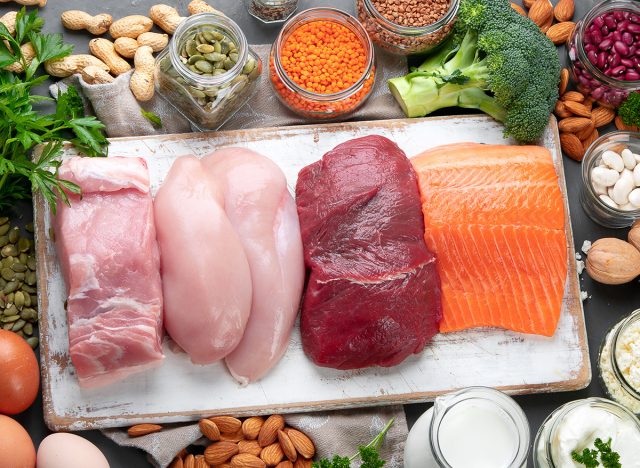4 Secrets to Burning Belly Fat While You Sleep

It seems too good to be true, but you can actually burn belly fat while you sleep. Max Posternak, a fitness trainer and influencer who founded Gravity Transformation, regularly shares tips and tricks on how to blast fat and get into shape efficiently and effectively. In a recent viral video, he discusses a few things you can do to accelerate weight loss, even when you are resting. "Here are three extremely effective tips to burn more fat while sleeping," he says at the start of the clip. Body Network's Resident RDN, The Diet Diva, Tara Collingwood, MS, RDN, CSSD, LD/N, ACSM-CPT, a Board Certified Sports Dietitian, co-author of the Flat Belly Cookbook for Dummies, also weighs in on his tips.
Make Sure You Are Getting Enough Iodine, Zinc, Selenium, and Vitamin D

First, you want to "optimize your thyroid function mostly by making sure that you're getting enough iodine, zinc, selenium, and vitamin D," says Posternak. "Make sure you're having iodine, salt for iodine, oysters for zinc, seafood for selenium and sunlight exposure, or a supplement for vitamin D." How does this help? "Optimizing your thyroid function can increase your metabolism by up to a thousand calories a day."
Build More Muscle

Next tip? Build more muscle. "Not only does muscle mass require a lot of calories to maintain even while you sleep, but it also increases insulin sensitivity and depletes glycogen stores, which will help recycle carbohydrates rather than storing them as fat," he says.
RELATED: 13 Strategies to Burn Body Fat Faster Than Ever Before, From a Champion Bodybuilder
Eat More Protein

"And the third thing is to eat more protein, at least 0.7 grams of protein per pound of body weight," says Posternak. "This is because protein has a high thermic effect. This means that the amount of energy it takes for your body to digest, process, and store protein is much higher when compared to other nutrients. Some studies estimate that between 15 to 30 percent of the calories taken in from protein are used right back up during the digestion process."
Body Network's Resident RDN Weighs In

Collingwood agrees that thyroid function is important when it comes to burning fat. However, "eating more of these nutrients isn't going to necessarily make your thyroid work 'better' or burn more calories," she says. A deficiency in the nutrients he mentions could affect thyroid function, but there are plenty of foods you can eat for these nutrients if you don't enjoy oysters and seafood," she adds.
Or, if you don't like any foods with these nutrients, you can always take a multivitamin just as a catch-all to ensure daily intake. She completely agrees with his muscle-building suggestion. "The more muscle you have on your body, the more calories you burn 24 hours a day, even while you sleep! You also burn more working, exercising, and relaxing," she notes. And, yes," protein burns calories while digesting, keeps you full longer, and helps you preserve muscle while trying to lose weight," she says.
RELATED: 5 Best Cardiovascular Exercises to Lose Body Fat
One More Tip: Move All Day

Collingwood offers another tip. "Increase your metabolism for the entire day by staying moving as much as possible," she encourages. "Sitting all day long, which most of us do, significantly reduces metabolism. Try to go for a 3 to 5-minute walk every 60 to 90 minutes throughout your work day to keep that metabolism up!"
💪🔥Body Booster: If you want to burn more fat while sleeping amp up protein and build muscle while you are awake.




